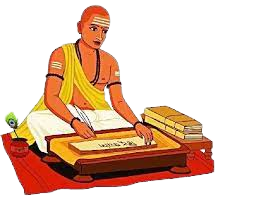Introduction: Jyotish, often referred to as Vedic or Indian astrology, is an ancient system of divination that has been an integral part of Indian culture for centuries. Rooted in the Vedas, the sacred texts of ancient India, Jyotish offers profound insights into one’s life, destiny, and personality. In this blog post, we will take a deep dive into the fundamentals of Jyotish, understanding its history, core concepts, and how it differs from Western astrology.
A Glimpse into History: To appreciate the essence of Jyotish, we must first understand its historical roots. Jyotish traces its origins to the Vedas, with references to astrological concepts found in the Rigveda, one of the oldest Vedic texts. Over time, Jyotish evolved, and different schools of thought emerged, such as Siddhanta (mathematical astrology) and Phalita (predictive astrology). It was during the medieval period that Jyotish experienced a golden age, with scholars like Varahamihira making significant contributions.
Key Differences from Western Astrology: One of the most striking differences between Jyotish and Western astrology is the zodiac system. Jyotish employs the Sidereal Zodiac, which is based on the actual positions of the stars and constellations. In contrast, Western astrology uses the Tropical Zodiac, which is based on the position of the Sun at the Vernal Equinox. This fundamental difference results in a variance of approximately 23 degrees between the two zodiacs, causing different sign placements for individuals.

Components of a Birth Chart (Kundali): At the heart of Jyotish lies the birth chart, known as the “kundali” or “horoscope.” A kundali is a graphical representation of the celestial positions at the exact time and place of an individual’s birth. It consists of several key components:
Houses (Bhavas): A kundali is divided into twelve houses, each representing different aspects of life, such as personality, wealth, family, and career.
Planets (Grahas): Jyotish recognizes nine main planets, including the Sun, Moon, Mars, Jupiter, Saturn, and others. These planets have unique characteristics and govern specific areas of life.
Zodiac Signs (Rashis): Each planet occupies a particular zodiac sign in the kundali, influencing its expression and impact on an individual’s life.
The Ascendant (Lagna): In Jyotish, the Ascendant, known as the “Lagna,” holds immense importance. It represents the eastern horizon at the time of birth and signifies the individual’s outer personality, physical appearance, and overall life path. The position of the Lagna, along with the planets in different houses and signs, forms the foundation of Jyotish predictions.
Understanding the Planets: Jyotish attributes specific qualities and influences to each planet. For example, the Sun is associated with ego, authority, and leadership, while the Moon represents emotions and the mind. The planets’ positions in the kundali provide valuable insights into one’s character, strengths, and challenges.
The Twelve Houses: Each of the twelve houses in a kundali corresponds to a unique aspect of life. For instance, the first house relates to self and personality, the second to wealth and family, the seventh to relationships, and the tenth to career and public life. The planets’ placement in these houses reveals the areas of life that will be most prominent for an individual.
Conclusion: Jyotish, with its rich history and intricate system of analysis, offers a profound means of self-discovery and understanding the patterns of one’s life. While this blog post provides a foundational overview of Jyotish, delving deeper into this ancient science can reveal its true depth and significance. In future posts, we will explore predictive astrology, health-related aspects of Jyotish, and how it can influence love and relationships. Stay tuned for more insights into the world of Jyotish and Indian astrology.

